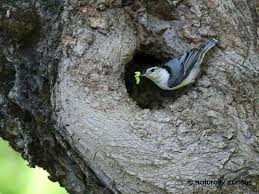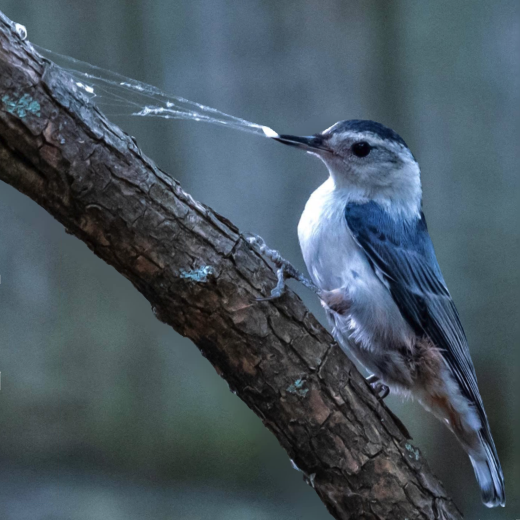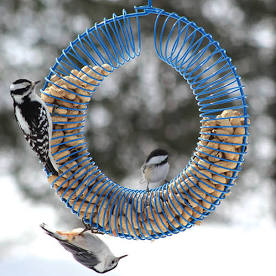Doug Becker, November 3, 2020
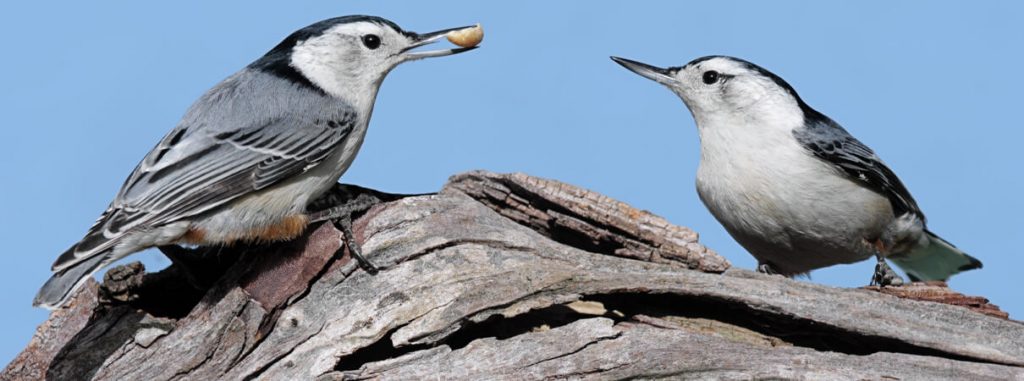
White-breasted Nuthatch
Nuthatches! Ya just gotta love them. White-breasted Nuthatches are those little black, grey and white busy-bodies busily crawling up and down, sideways and upside down on the tree branches looking for insects. They also feed on large nuts, corn, and acorns. In fact, their name comes from how they will jam nuts into tree bark cracks and beat them with their sharp bill to “hatch” out the seed from the inside. These small, agile, short-tailed and no-necked little birds are White-breasted Nuthatches. They are cute, entertaining, and should be a year round resident at your feeder.

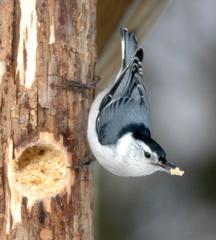
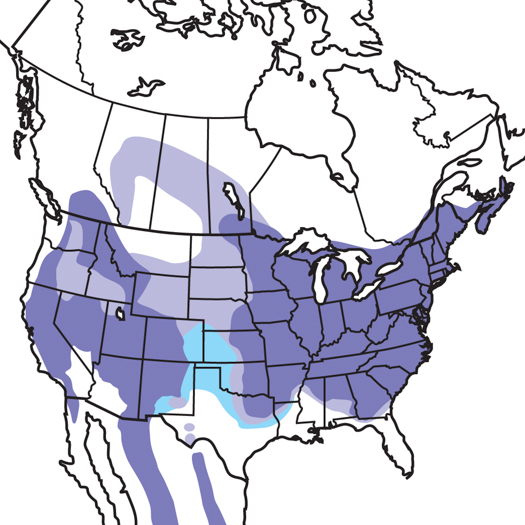
White-breasted Nuthatches generally associate with Black-capped Chickadees and Tufted Titmice. When these small and vulnerable feeder birds are in a group, they can spend more time safely feeding on their energizing suet and favorite wild bird food and less time watching for predators. Each time I look out at our feeder and see these three birds, and usually a Cardinal as well, I just say, “The gang’s all here.”

Red-breasted Nuthatch

White-breasted Nuthatches range from all of southern Canada, coast to coast in the U.S. and well into Mexico. They are, however, not the only nuthatch in the U.S. The Red-breasted Nuthatch shares the same space. They are especially found in northern forests and mountain areas. The Red-breasted Nuthatch has reddish underparts, a gray back and wings, and a striking black and white head with a long white eyebrow. They fly with groups of chickadees, kinglets, and woodpeckers through tree canopies, but feed on large, lower branches and tree trunks like the White-breasted Nuthatch. At the feeder, they’re an intense bundle of energy that you just can’t miss.
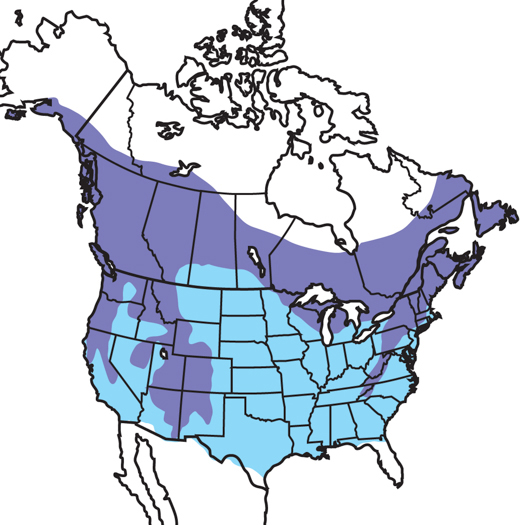
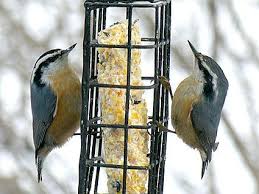
Brown-headed Nuthatch
The other two nuthatches in the U.S. are less numerous. The Brown-headed Nuthatch is found only in the deep southeastern states. They are white on the bottom and gray above with a totally brown head. They fly in flocks in mature pine forests and can be hard to find. Fortunately, their distinctive call, which sounds like a “rubber ducky”, makes their find much easier. So, hearing a bunch of rubber duckies in a deep southern pine forest could be your lucky day.
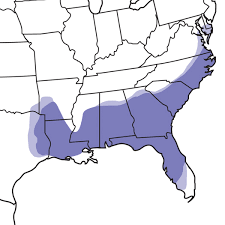

Pygmy Nuthatch
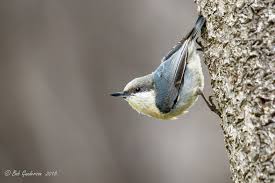
Finally, the western and southwestern states, and scattered in small areas, is home to the Pygmy Nuthatch. Although not real colorful, these birds have got to be among the cutest woodland songbirds in the land. Weighing in at a third of an ounce, this tiny hyperactive nuthatch consumes up to nine calories of insects and seeds per day! They are very social, and fly in small flocks making the same “rubber ducky” song as the Brown-headed Nuthatch. Most interesting is that the Pygmy Nuthatch is one of only a few songbirds in North America that have nest helpers. While hammering on a cavity to make a nest, relatives will come to help out. This includes the grown-up offspring as well. The helpers help defend the nest and even feed the incubating females and the chicks! Life is so much easier when it’s all in the family!

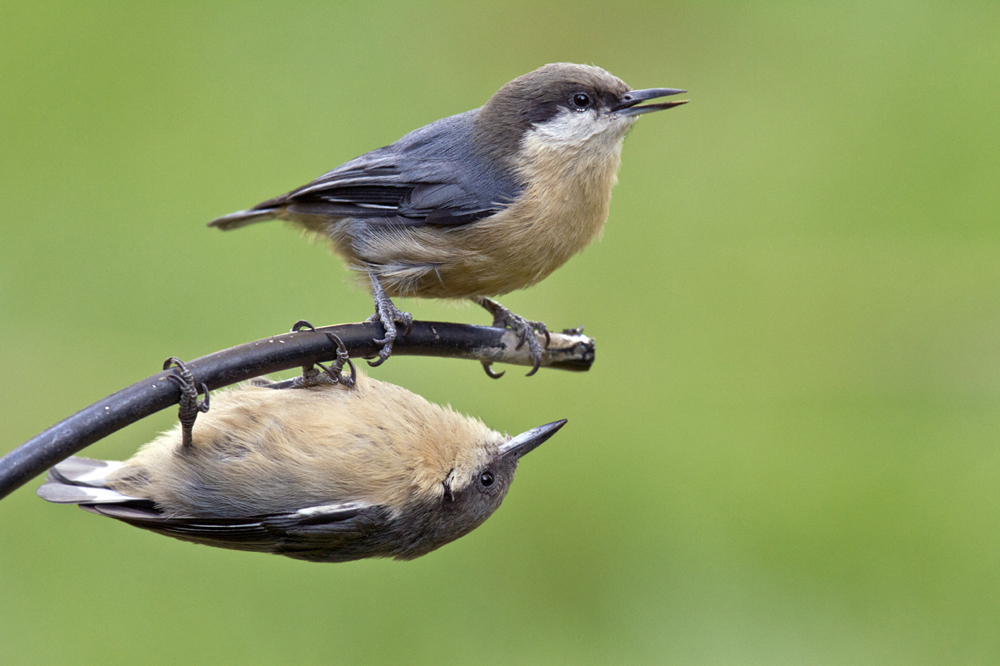
Our North American nuthatches remain to be some of the most intriguing and entertaining little birds of the forest. Relative to where you live, these nuthatches are pleased to show up at your feeder all 4 seasons long. They are all fast and hyperactive as they forage in the trees upside down, sideways, or straight up. Grab your birding binoculars and be entertained. See ya out there.
